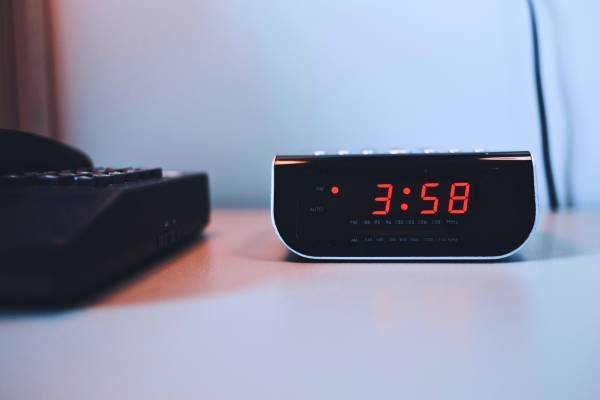An alarm clock is an essential tool in our daily routine, ensuring we start our day on time. But have you ever wondered, “How does an alarm clock work?” This article delves into the fascinating mechanics and technology behind both traditional and modern alarm clocks. From the intricate gears of mechanical clocks to the sophisticated circuits in digital models, we explore how these devices reliably wake us up. Understanding the workings of alarm clocks not only satisfies curiosity but also helps in choosing the best one for your needs. Join us as we uncover the secrets behind the watches that keep our lives punctual and organized.
History of Alarm Clocks
The history of alarm clocks is a journey through timekeeping innovation. Early timekeeping devices, such as water watches and sundials, laid the foundation for more precise mechanisms. The first mechanical alarm clocks appeared in the 15th century, featuring simple gear systems. Key developments included the introduction of the mainspring in the 17th century, allowing for smaller, more portable clocks. The 20th century saw the rise of electric and digital alarm watches, revolutionizing accuracy and convenience. Today’s smart alarm clocks integrate advanced technology, offering features like app connectivity and personalized wake-up routines. This evolution highlights the blend of ingenuity and technology in perfecting our wake-up calls.
Basic Components of an Alarm Clock

An alarm clock comprises several key components: the clock mechanism, alarm mechanism, power source, and interface. The clock mechanism is responsible for keeping accurate time, utilizing either mechanical gears or electronic circuits. The alert mechanism is set to trigger at a specific time, activating sound, light, or vibration alerts. The power source, often batteries or electricity, ensures the clock functions continuously. The interface, including buttons and displays, allows users to set and control the time and alarm settings. These components work together seamlessly, enabling the alarm clock to reliably wake users at their desired time, ensuring punctuality, and enhancing daily routines.
Mechanical Alarm Clocks
Mechanical alarm clocks operate through a series of intricate components working in harmony. At the heart of these traditional devices are gears and springs. The main spring, when wound, stores potential energy, which is gradually released to move the gears, keeping time accurate. The alert mechanism involves a secondary spring connected to a set time. When the set time arrives, the gears trigger the release of this spring, causing the bell to ring. This combination of mechanical precision and simplicity ensures a reliable wake-up call without the need for electricity. Discover how these classic timekeepers continue to serve with dependable accuracy.
Digital Alarm Clocks
Digital alarm clocks revolutionize how we wake up, blending technology with convenience. These watches use digital technology for precise timekeeping and reliable alerts. Key components include a digital display that shows the time clearly, electronic circuits that manage time and alarm functions, and a power supply, typically from batteries or an electric outlet, ensuring consistent operation. The electronic circuits handle all programming, allowing for features like multiple tones, snooze functions, and customizable alarm tones. With their user-friendly interfaces and advanced functionalities, digital alarm clocks offer an efficient and modern way to stay punctual. Discover the reliability and innovation behind digital alarm clocks and how they enhance our daily routines.
Electronic Alarm Mechanisms
Electronic alarm mechanisms are the heartbeat of modern alarm clocks, offering a myriad of options to wake us up. These tones are set and triggered through electronic circuits, seamlessly integrating with our daily routines. One of the key advantages lies in their versatility, offering various alarm types such as sound tones, light alarms, and vibration tones. While sound alarms are the traditional choice, light alarms gently rouse us with gradually increasing brightness, mimicking sunrise. On the other hand, vibration tones cater to those who are hard of hearing or prefer a more tactile wake-up call. This diversity ensures that everyone can find an alert that suits their unique preferences and needs.
Advanced Features in Modern Alarm Clocks
Modern alarm clocks offer a plethora of advanced features designed to enhance functionality and elevate the user experience. Among these features is the beloved snooze function, which allows for a few extra minutes of precious sleep without fear of oversleeping. Additionally, many modern alarm clocks come equipped with radio tones, providing the option to wake up to your favorite radio station or music playlist. Moreover, the integration of smart alarms has revolutionized the way we wake up, allowing for personalized alerts based on sleep cycles and syncing with smartphones for added convenience. These innovative features collectively ensure that waking up in the morning is not only efficient but also enjoyable.
Smart Alarm Clocks and Integration with Technology

Smart alarm clocks represent the pinnacle of alarm clock technology, seamlessly blending into our interconnected lives. These innovative devices go beyond simple timekeeping, integrating with smartphones and smart home systems to offer unparalleled convenience. By synchronizing with our digital devices, smart alarms can provide personalized wake-up experiences, adjusting settings based on sleep patterns and preferences. Additionally, they often feature advanced functionalities such as weather updates, traffic alerts, and even integration with music streaming services, enhancing both our mornings and overall productivity. With smart alarm clocks, waking up becomes not just a routine but a tailored and enriching experience tailored to our individual needs and lifestyles.
Common Problems and Troubleshooting
Users of both mechanical and digital alarm clocks may encounter common issues that disrupt their morning routine. Mechanical clocks might suffer from inaccurate timekeeping due to worn-out gears or springs, while digital watches may experience power failures or malfunctioning displays. Fortunately, troubleshooting these problems can be straightforward. For mechanical clocks, ensuring regular maintenance and lubrication can improve accuracy, while digital watches may benefit from checking the power source and resetting the device. Additionally, adjusting alarm settings and ensuring proper placement can help mitigate issues such as the tone not going off or being too quiet. By addressing these common problems proactively, users can enjoy uninterrupted mornings and reliable wake-up calls.
Conclusion
In conclusion, understanding how an alarm clock works is not only fascinating but also practical for optimizing our daily routines. From the intricate mechanisms of traditional mechanical watches to the sophisticated digital technology of modern models, these devices play a crucial role in ensuring we start our days punctually. By exploring the inner workings of alarm clocks, we gain insight into their reliability and functionality. Whether it’s troubleshooting common issues or embracing the latest smart alarm features, our knowledge of how these devices operate empowers us to make informed choices. So next time your alarm clock wakes you up, take a moment to appreciate the engineering marvel that helps keep us on schedule.
